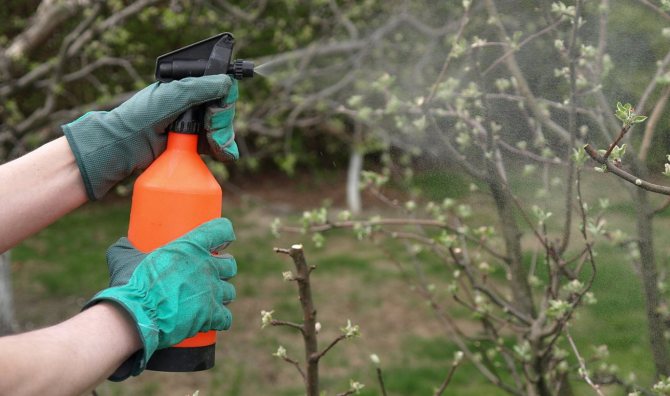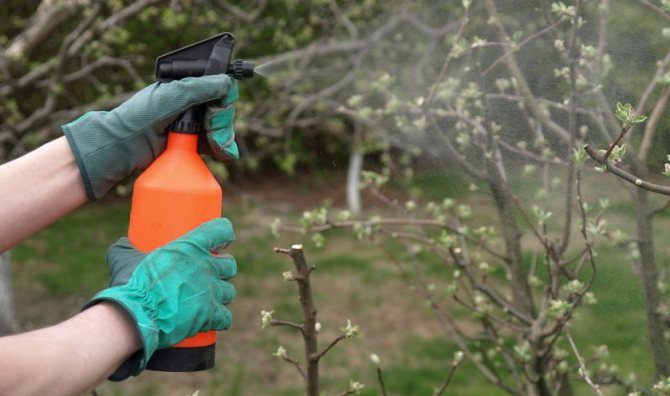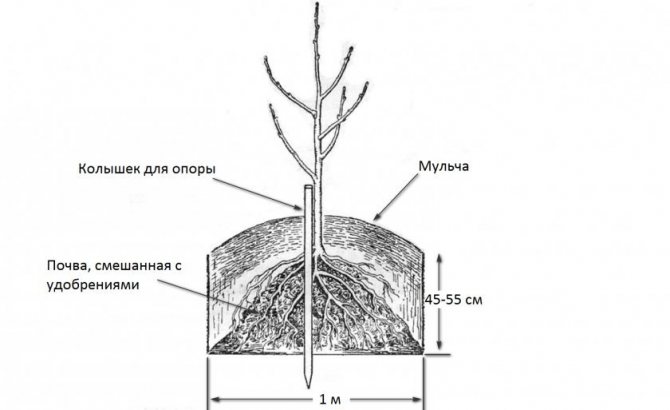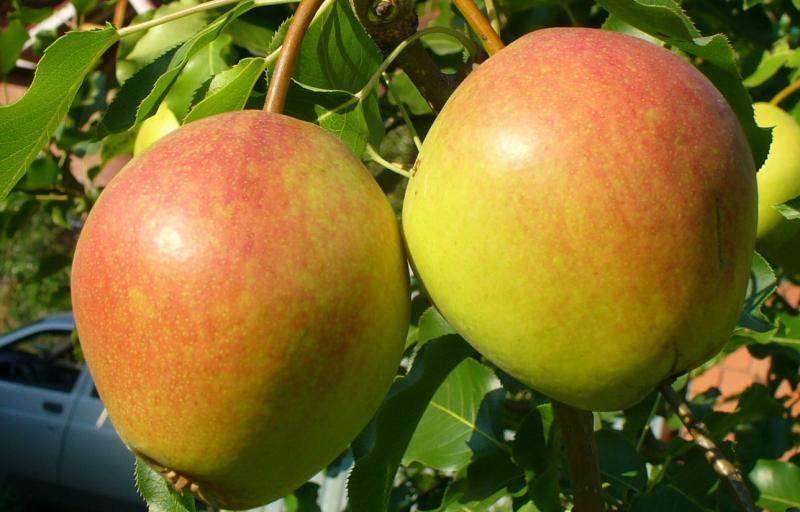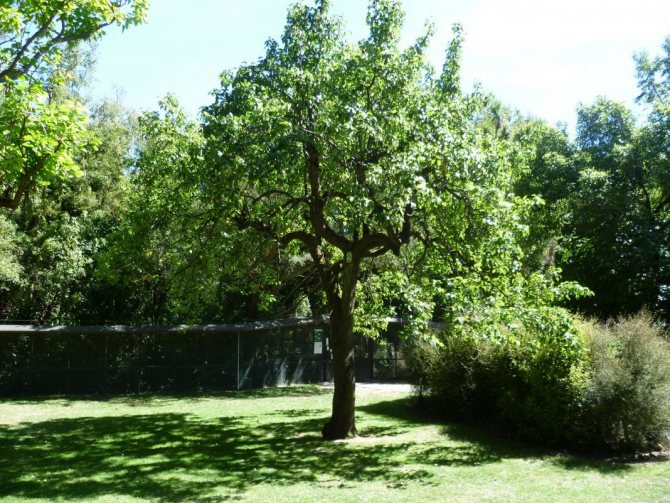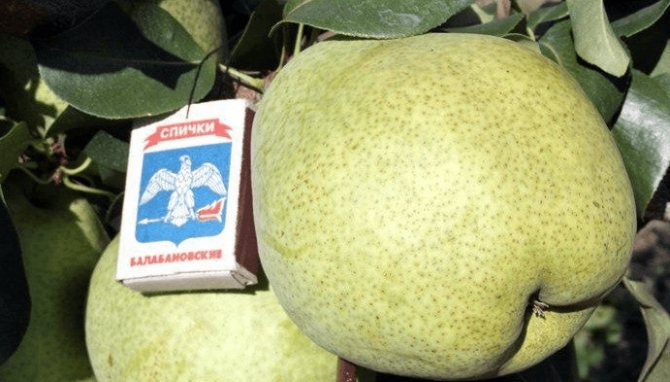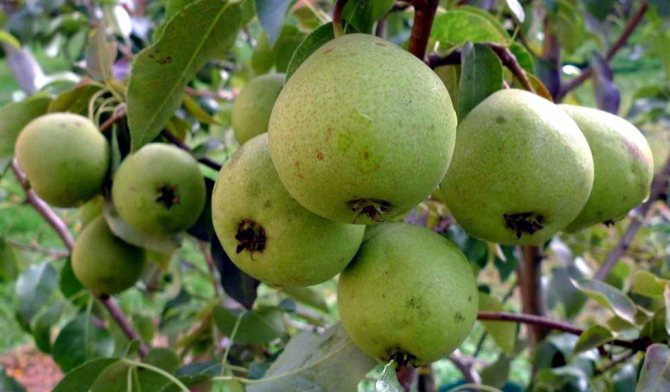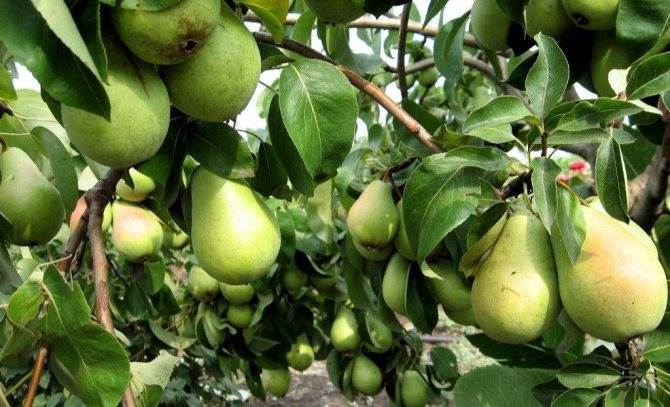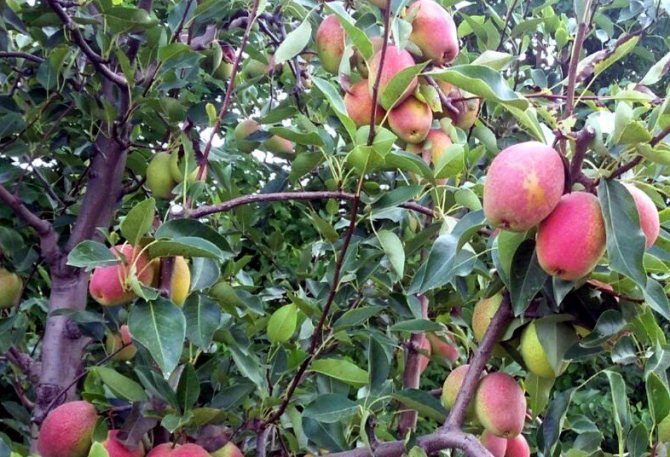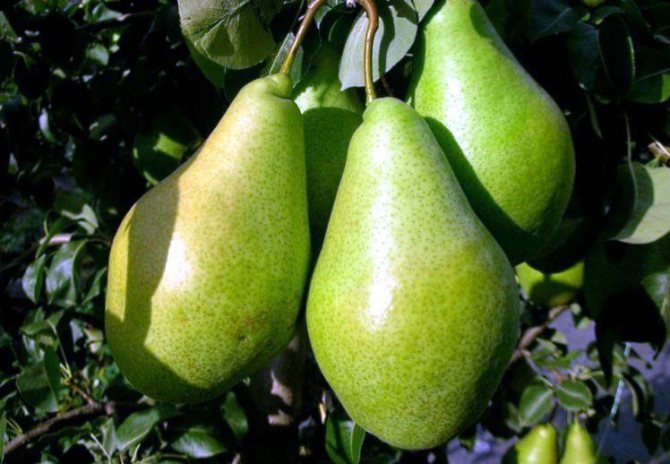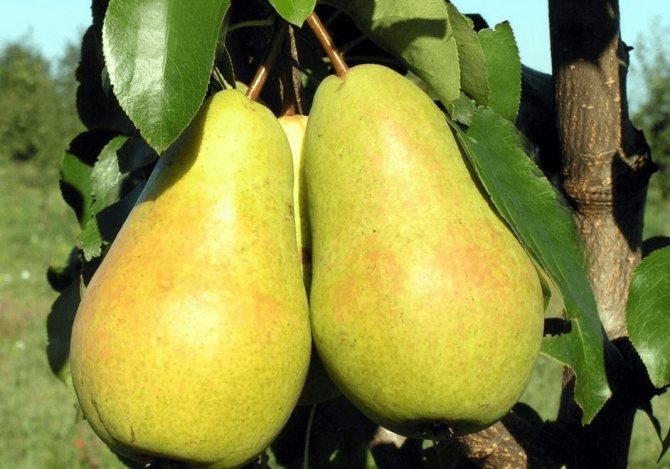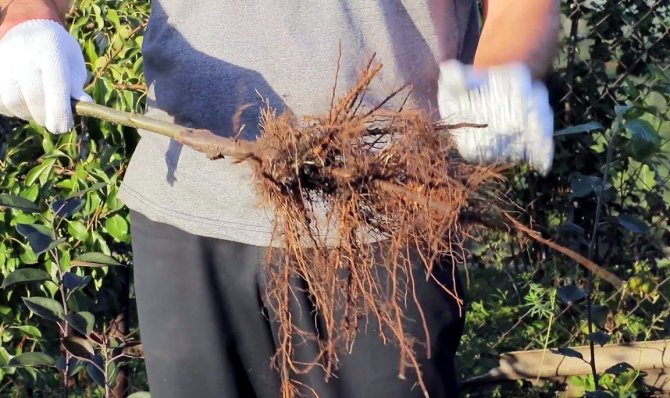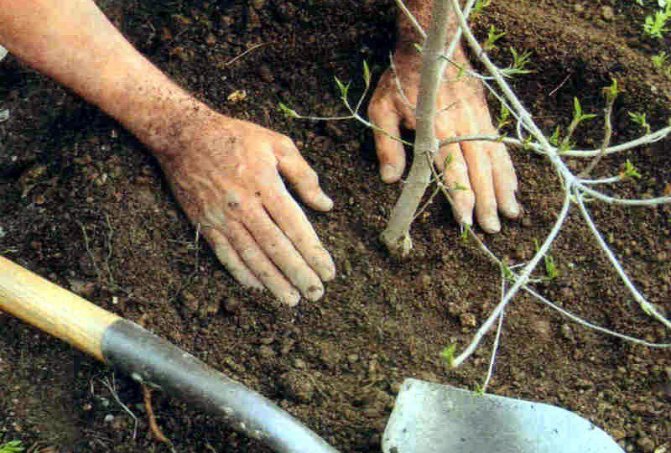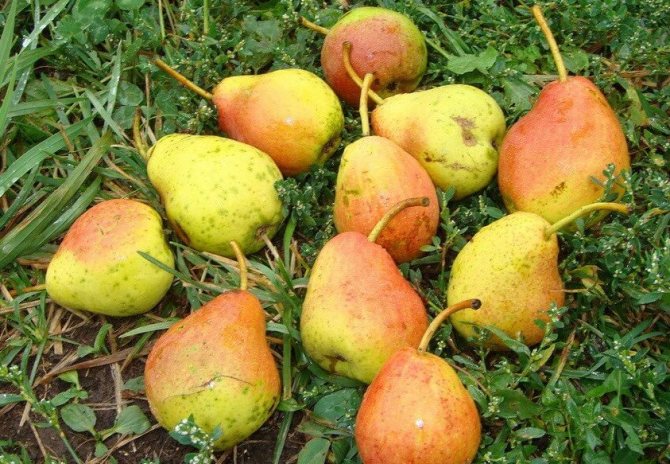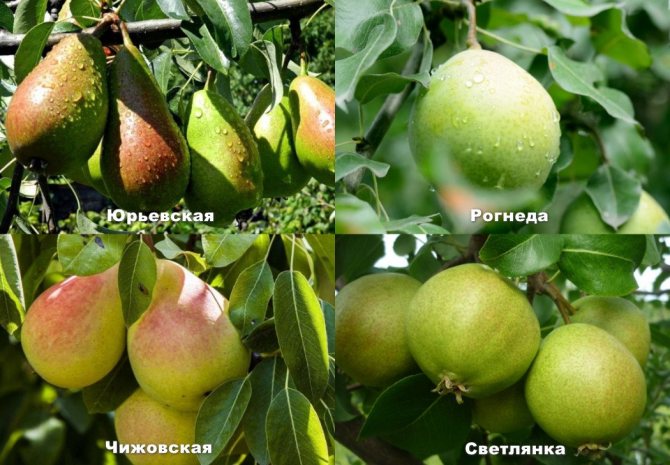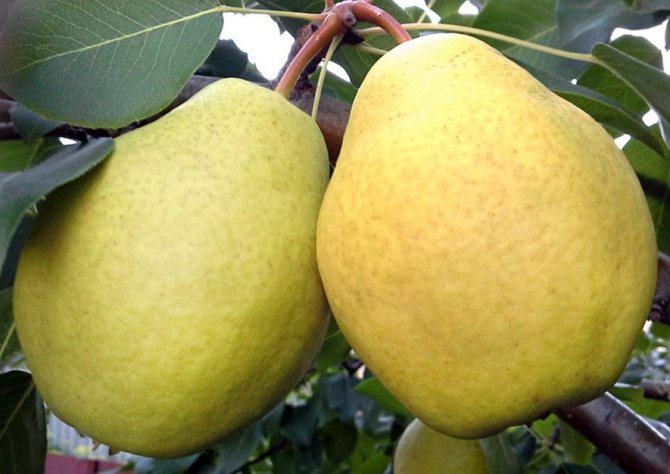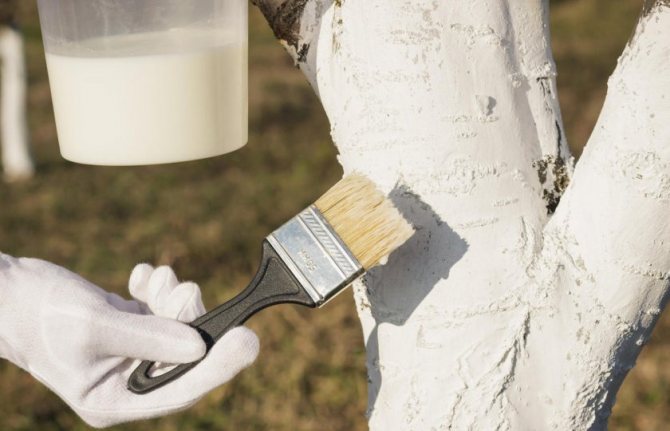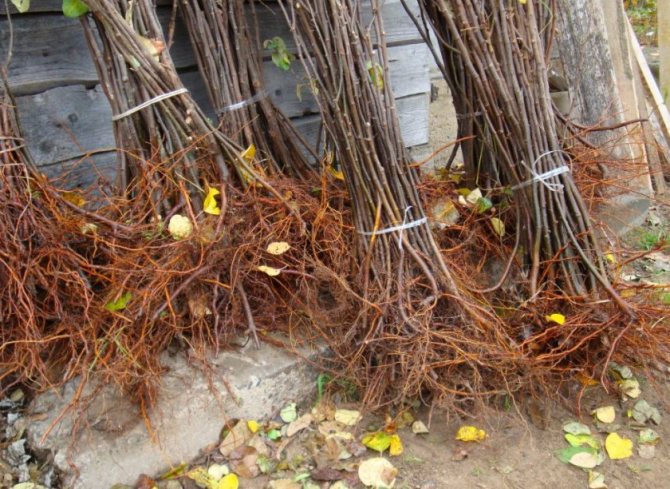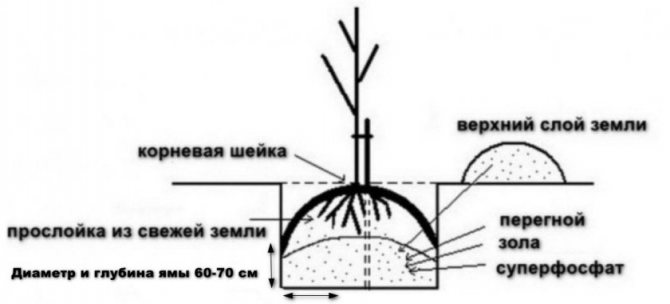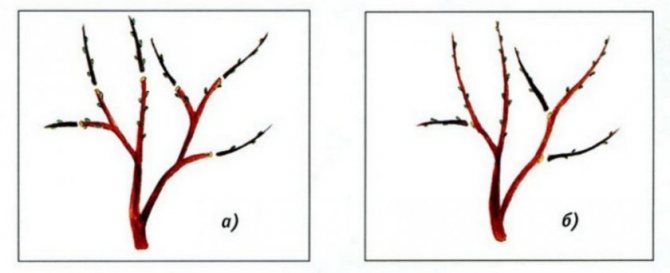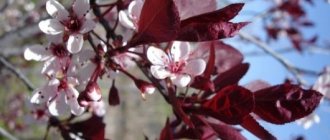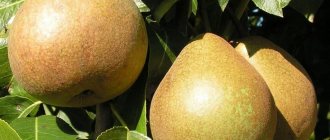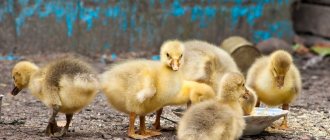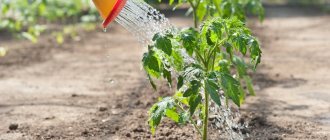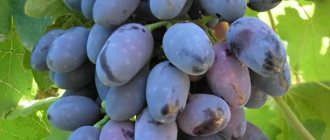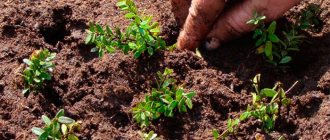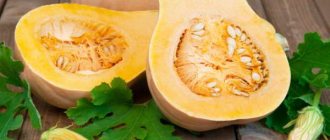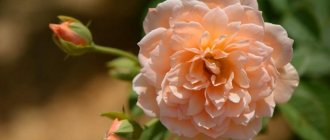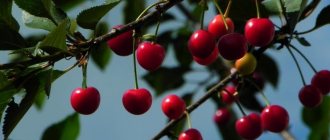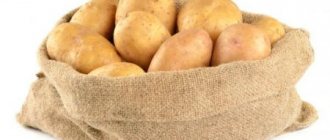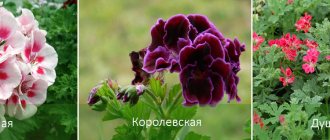Gardening »Pear
0
811
Article rating
Autumn pear varieties have their own characteristics: fruits are stored longer, they are sweeter and juicier, and also have a high yield. Fruits ripen in autumn. All species are different and have features of care and planting.
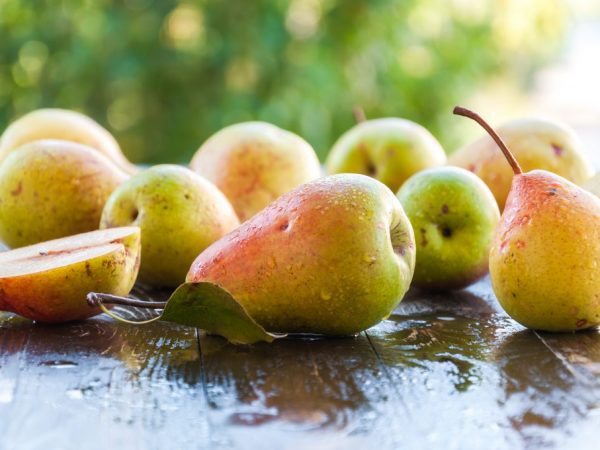
Characteristics of autumn pears
Moscow autumn
The fruits of the Moscow autumn are juicy, disease resistant. The best regions for planting are the Moscow region and the middle strip of Russia. The crown of the tree is in the shape of a pyramid, the plant is medium-sized.
Moscow autumn is susceptible to cold, so gardeners are advised to either mulch it or cover the soil. Harvesting is carried out throughout September.
Description of the features of the Moscow Autumn:
- fruit weight - up to 100 g;
- elongated shape;
- green-yellow color;
- pinkish tint.
Garden varieties for the Moscow region, description
Prominent or Lumpy
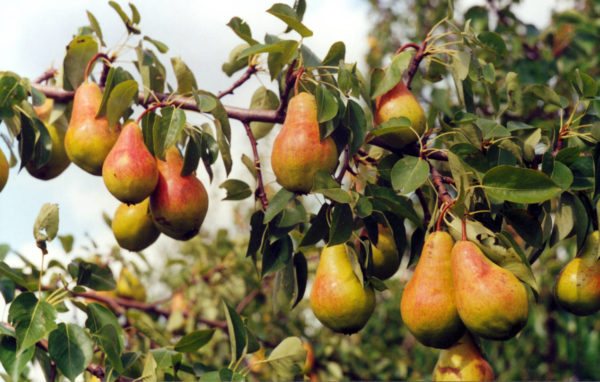

Pear variety Bumpy
A pear variety that has long been loved by the Moscow region. A tree no more than 5 m high, with a fairly spreading young crown, which subsequently takes on a pyramidal shape. During the summer, the tree forms many young branches, which must be cut in autumn, otherwise the fruits will become smaller. The leaf plate is elongated, with light streaks, dark green in color. Blooms in early spring, many white inflorescences with a pleasant aroma.
Fruiting begins in the 5th year, fruits of medium size, regular pear-shaped. The color is greenish-yellow during the summer, with a red tint closer to autumn. Fruits with thick skin and coarse white flesh... Sweet and juicy on the palate, with a pleasant aroma. When harvested, it can last for several months, but it is recommended to harvest the fruits in mid-August, when the fruits are quite hard and slightly underripe.
Tenderness
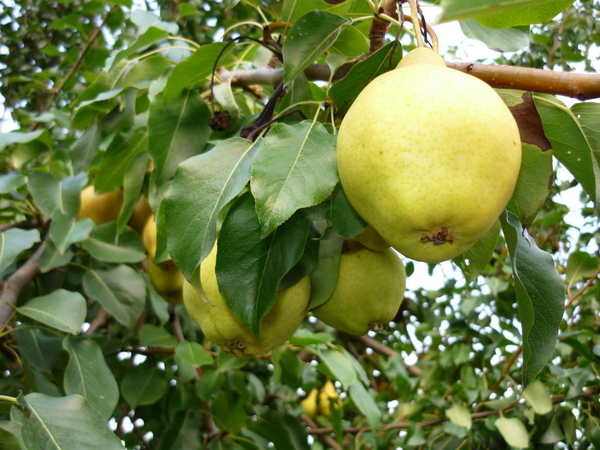

Hybrid variety Tenderness
The variety obtained as a result of crossing Tyoma and Lyubimitsa Klapp. A particularly large amount of crops gives in the Volga region, the middle lane and in the Moscow region... The tree is medium-sized, no more than 4 m in height, with a sparse crown. The branches are thin, light gray. The tree blooms in mid-spring, white, small inflorescences. The leaves are round, with smooth edges, smooth. Frost-resistant, able to bear fruit annually. It prefers to grow in sunny areas, is resistant to diseases, is not afraid of pests, so growing this variety will not be difficult.
Fruits are large, weighing more than 200 grams with a regular pear-shaped fruit... The pear tastes soft, juicy, coarse-grained with a pleasant aroma. Attached to branches with short stalks. In the middle of the fruit is a chamber with brown seeds. The fruits of this pear are preserved for a long time both on the tree and in the harvested form, especially at a temperature of 0 degrees.
The pear tree is not capable of deforming, which is why, for example, rulers for architects are made from it.
Fabulous
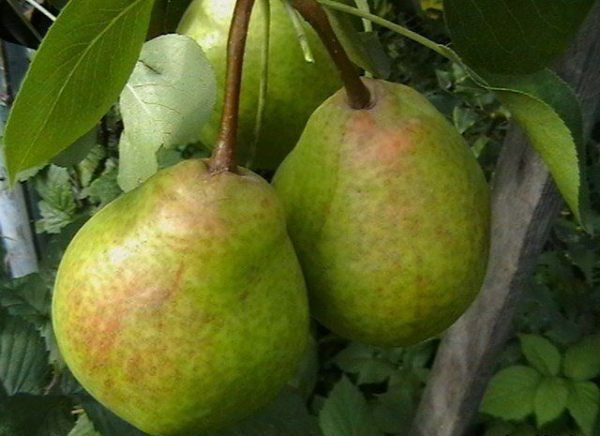

Pear Fairy is characterized as a tall and very productive variety.
It got its name from the beautiful fruits. Obtained as a result of crossing the varieties Powislaya and Tenderness. The pear has a high yield, more than 30 kg of ripe fruits are harvested from one adult tree per season... The height of the tree reaches 4 m, the branches are dense, thin with a gray-brown crown. The leaf plate is smooth, rather small, of green shades, with small teeth along the edges.
When the pear ripens, it becomes yellow-reddish on one side and greenish on the other. Has the correct shape of the fruit, moreover one pear can weigh over 150 grams... The pulp of the pear is white, fleshy, medium-grained. In the center of the fruit are chambers with dark brown seeds. It tolerates diseases steadily, is not afraid of frost, seedlings easily take root in a new place.
Vera Yellow
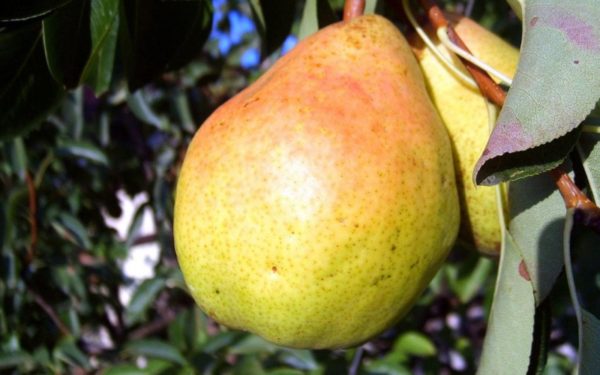

Vera Yellow
Another suitable variety for planting in the Moscow region. A tree with a height of more than 6 m, with a pyramidal trunk, with erect branches of a brown-brown color... Young leaves of light green tones, by autumn change color to dark green shades. Frost-resistant, does not need special care. The pear ripens in mid-September. It differs from others in that it has declines in yield, the fruits become smaller, but after a couple of years the pear again pleases with a large harvest.
Fruits have green hues throughout the summer, but change to yellow-orange colors closer to autumn. Fastens on short stalks, grows 2-3 pears in a bunch... To the taste, the pear is fragrant and fleshy, medium-grained pulp with a thin skin. Good storage capacity, especially in a cool place.
Elegant Efimova
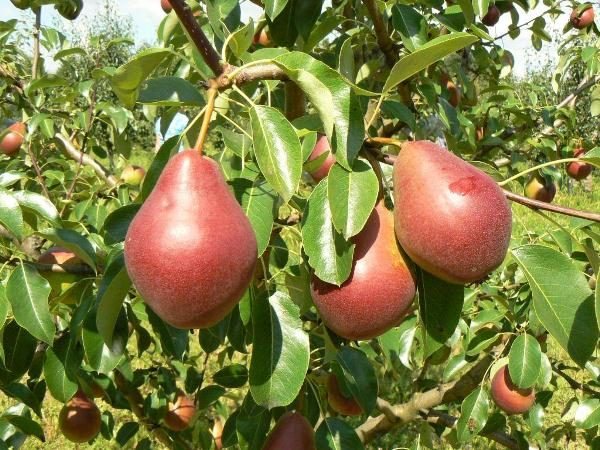

Variety Dressy Efimova
It turned out as a result of crossing the varieties Lyubimitsa Klappa and Tonkovotka. It grows well and gives a rich harvest in the Central Region, the Moscow Region and other nearby regions. High-yielding, winter-hardy, not subject to pests and diseases... The tree is tall, more than 5 m in height, with a dense crown, dark brown, pyramidal in shape. The leaves are small, dark green in color, with smooth edges.
Beautiful fruit appearance, red-orange tones are intertwined with green shades. But the fruits are small in size, weighing no more than 120 grams, regular, slightly distant shape. Soft, juicy pulp with a pleasant sweet aroma. The thin skin of the pear is prone to dark spots during the summer. Fruits ripen at the end of August, overripe quickly, so it is better to collect them a little hard, and it is recommended to store them in a cool and dark place.
Venus
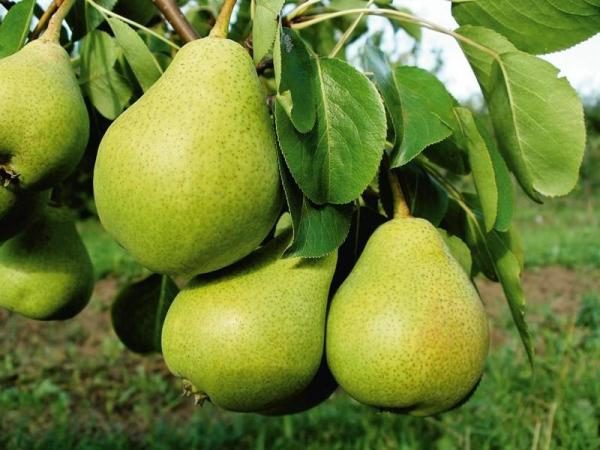

Pear venus
Another popular variety for planting, due to its winter hardiness and unpretentious care. Tree no more than 4m high, the crown is quite spreading, young branches are slightly lowered down, light brown in color. The variety blooms in early spring with white inflorescences with a sweet aroma. The variety also differs in high yield, an adult tree is capable of producing more than 40 kg of harvest over the summer. Does not need rest, is able to bear fruit annually. In addition, the variety tolerates frosts, diseases and pests quite steadily.
The variety ripens in early autumn, the fruits are large, weighing up to 200 grams... Red-yellow in color, green tones when ripe. The taste is soft, juicy, slightly sour with a thin skin. They are stored for a long time both on the tree and when assembled.
Regardless of the specific variety, of which there are a huge variety today, the main thing in a pear is its taste and useful microelements, which are so abundant in ripe fruits. Winter, summer and autumn varieties differ from each other not only in taste, but also in the speed of fruit ripening., features of care, and the ability to preserve the fruit. Which variety to choose is up to you.
Big pear
The Big Pear is characterized by rapid growth of fruits, the trees are tall, with a spreading crown. The planting site should be large due to the large size of the tree. Harvesting is in September.
Description of the features of the late variety Big Pear:
- round shape;
- shelf life - 5 months;
- color is light yellow;
- weight does not exceed 150-200 g;
The plant needs abundant watering.
The culture is resistant to frost, which makes it possible to grow it in Siberia and the Urals. Trees need annual pruning.
Features of choosing a suitable variety
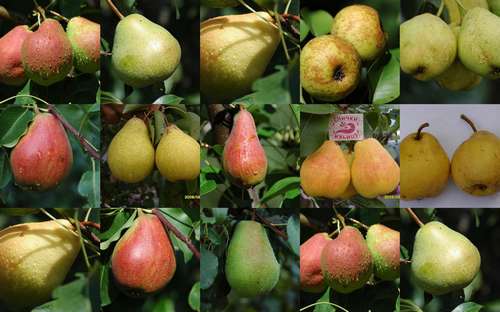

Today there are a large number of different varieties of pears. So, some of them are highly resistant to the adverse effects of the environment, while other varieties should be planted only in soil that has been carefully prepared beforehand. All varieties of such a plant are distinguished by the fact that they prefer warmth and they need a rather mild climate. All varieties of pears are divided into 3 types:
- summer;
- autumn;
- winter.
In this case, you need to choose a seedling variety depending on when exactly you want the pears to ripen. Those gardeners who have experience in growing pears prefer to grow all three types of pear trees in their own at once. In this case, you can enjoy fresh juicy fruits throughout the season. Pear varieties with descriptions will be presented below.
Bere pears
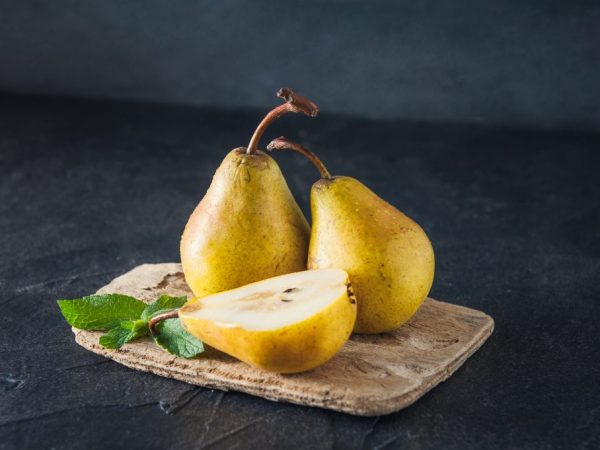

Pears keep well
This variety is considered easy to care for, frost-resistant. Bere pears are of French origin and are harvested in mid-September.
Trees reach their maximum growth by 10 years, have a spreading crown. Cropping is a must for Bere. The size of the fruit is about 250 g. The shape is oblong. The taste is delicate and sweet. The plant begins to bear fruit only after 6 years.
Harvesting and storage
This variety gives a good harvest, one tree can produce about 30 kg of fruit per season. The fruits ripen by the end of September and are well transported. Harvesting is recommended in dry weather. You need to pick the fruits carefully, without damaging the stalk. Fruits that are not injured during collection and transportation deteriorate less during storage. If the fruit is harvested in warm sunny weather, the fruit should be left in the shade until it cools. After that, the fruits must be carefully sorted out, removing rotten and damaged by pests.
As containers for storage, boxes made of wood or plastic are used, as well as boxes made of cardboard. In the selected container, fruits are laid in rows, interlayering them with dry straw or wood shavings. The boxes with fruits must be placed in a room with an air temperature of +1. + 4 ° С and humidity at the level of 90–95%. Fruit can be stored until mid-December under proper conditions.
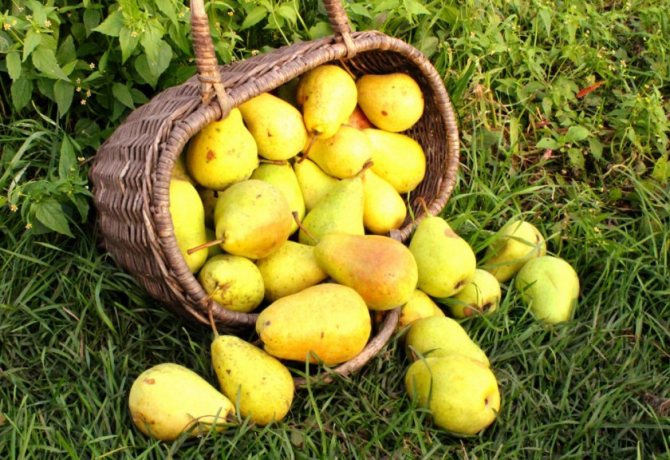

When choosing a variety of pears Autumn sweet for planting, it is necessary to take into account the peculiarities of the climate in your region. Knowing about all the features of caring for this variety and applying them in practice, you can grow a healthy tree and harvest from it a rich harvest of fragrant and sweet fruits.
Care
In order for the pear to be fertile, the trunk is whitewashed: this helps to protect the plant from pests. In winter, trees are insulated, for which roofing material is used. There is a watering rate - 2 buckets of water per year of the pear's life. In this case, sprinkling is used.
The trees are pruned in the spring and after the seedling is planted.
Pruning is carried out twice a year, removing bad branches, giving the crown a beautiful shape and at the same time getting rid of pests. The first pruning is carried out at 2 years of age.
Features of planting and caring for a pear
Having chosen Autumn Sweet for your site, it is necessary to apply in practice the rules for planting and caring for this variety.
Landing rules
Compliance with the rules for planting seedlings is of utmost importance. Let's take a closer look at what you need to pay special attention to.
We advise you to learn about pear breeding methods.
Choosing the best seedlings for planting
Seedlings are best purchased in nurseries, while you need to pay attention to the following subtleties:
- Sapling age. There is a misconception that fruiting will occur faster if you acquire tall, powerful seedlings 3-4 years old. However, it is these trees that can be painful and die. Saplings 1–2 years old take root well. They can be distinguished by the thickness of the stem, which is 12 mm. One-year-olds lack lateral branches, two-year-olds may have several branches, up to 30 cm long.
- Root system. The roots should be well formed and at least 30 cm long, free from damage and growth. It is recommended that when making a purchase, choose seedlings with open roots.
- View of the trunk and branches. They should be of a uniform color, and spots and blotches indicate diseases of the seedling.
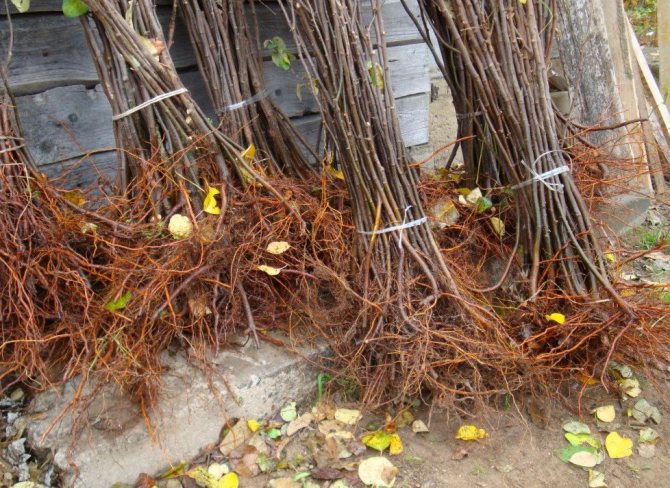

Choosing a landing site
The optimal conditions for the growth of Autumn Sweet are places protected from drafts. The most suitable option is plant a pear tree on a warm slope or area on the south side of the house. It is not recommended to plant a pear in lowlands and places with stagnant cold air. Shading by other trees should not be allowed in the area of the growing tree.
We recommend that you familiarize yourself with the features of growing autumn varieties of pears:
Landing scheme
It is necessary to plant seedlings according to the 6x3 or 5x4 m scheme. In this case, the procedure should be carried out according to the instructions below:
- In the fall, you need to prepare a pit, the diameter and depth of which are 60–70 cm. Introduce 15 kg of humus and 500 g of superphosphate into the pit.
- Before planting in the spring (April-May), dip the roots of the seedling in a "chatterbox" of clay and water.
- When lowering the seedling into the hole, it is necessary to pay attention to the fact that the root collar is raised above ground level by 1.5 cm.
- Straighten the roots of the seedling and fill the planting hole with earth.
- Water the seedling and mulch the soil.
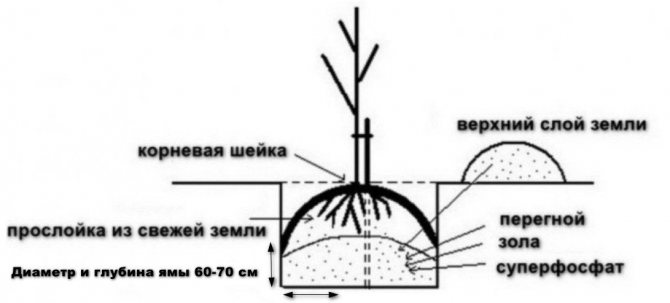

Watering and feeding
In the first 2-3 weeks after planting, the pear tree needs watering. This helps to strengthen the root system. In dry summers, be sure to water the pears abundantly. Trees of Autumn Sweet experience a special need for this procedure during growth (in June) and pouring of fruits (in August). When watering, it is necessary that the soil layer is moistened by 50–70 cm. During the season, you need to spend 5-6 irrigations with abundant water. At the beginning of August, the last watering is carried out.
Important! In order for the moisture to remain when watering the pear, it is necessary to mulch the trunks using humus or peat.
Top dressing is required 3-4 years after planting. The fertilization rate is as follows:
- organic - it is introduced in the fall once every 3 years into the near-trunk circle when digging up the soil (3-5 kg of humus or compost will be needed per 1 m²);
- nitrogen - is applied every year in spring (for 1 m² you need 20-30 g of ammonium nitrate);
- phosphorus-potassium complex - is introduced in the fall into circular grooves with a depth of 40-50 cm.
Video: pear fertilization
Pruning methods
There are 2 ways to trim:
- Shortening. In this procedure, parts of shoots and branches are partially removed. It promotes increased shoot growth, thickening of branches and helps buds to develop.
- Thinning. This is the complete removal of shoots and branches. The procedure helps to keep the crown from thickening and contributes to a generous harvest.
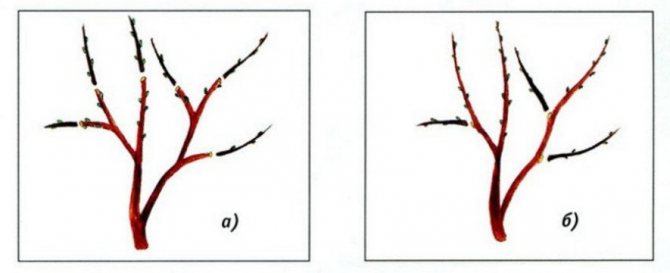

Cutting technique: a) shortening; b) Thinning Pruning should be done every year after the tree has overwintered. When the upper wood freezes, it is shortened by one third. In spring thinning, pruning is done “on the ring”, leaving no stumps.
Video: correct pear pruning
Whitewash
It is necessary to whitewash trees to protect them from mechanical damage, frostbite and sunburn. Whitewashing also helps to disinfect the stem and kill existing microbes. If you do not whitewash the bark, cracks may appear there, which will be chosen by microbes and pests, which will contribute to the infection of the tree.
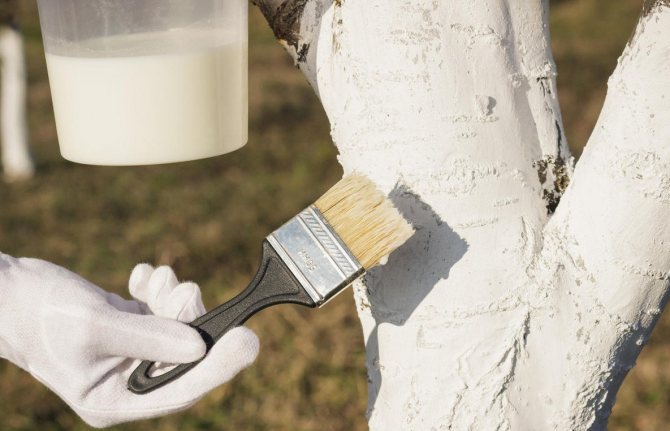

In specialized stores, you can buy a ready-made solution, although it is easy to make it yourself. In 10 liters of water, add 1.5 kg of clay and 2 kg of lime and stir well. When whitewashing a seedling, it must be completely covered with a solution. An adult tree is whitened from the base of the trunk to the growth of the lower branches.
Preparing for winter
Preparing autumn sweet for winter, it is necessary to mulch the soil with humus or sawdust. This will protect the root system and prevent hypothermia.
Important! Cannot be used for pear Autumn sweet synthetic moisture-proof covering materials. They tend to build up moisture and cause trees to rot.
To insulate the trunk, it should be wrapped with spruce branches, brushwood, burlap, non-woven cloth or other covering material. Small holes need to be made in it in order for air to circulate.
Video: preparing sadness for winter
Biological features
In terms of biological characteristics, the pear has much in common with the apple tree, but it is less winter-hardy than the apple tree, but more drought-resistant. For most varieties of pears, which are considered autumn and winter, it is necessary that the season be at least 110-120 days with an average daily temperature of 15 ° C and above.
The pear blooms somewhat earlier than the apple tree, which, in combination with its lower frost resistance, increases the risk of cold damage to young ovaries. The most frost-resistant varieties close to the wild type are tall trees with a crown resembling an elongated tongue of flame and small fruits.
In the shape of the crown, modern varieties are mostly closer to the apple tree. The height of cultivated pears rarely exceeds 15 m, while wild plants can reach 25 m or more.
The pear is very light-requiring, with insufficient lighting, its yield is greatly reduced. Unlike many other horticultural crops, the quality of pears in pears strongly depends on the growing conditions and care: on poor, rarely and insufficiently fertilized soils, they turn out to be harder and more acidic, especially in cold summers.
Most varieties of pears are distinguished by longevity - under favorable conditions, they can grow and bear fruit for 80-90 years. Most varietal pears, incl. and self-fertile, needs pollinators, since with cross-pollination, the quality of the fruit and the yield increase significantly.

